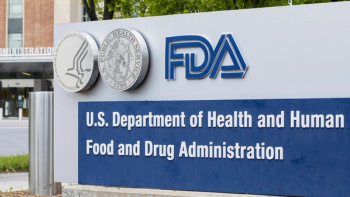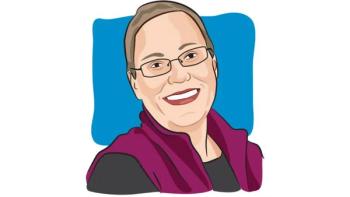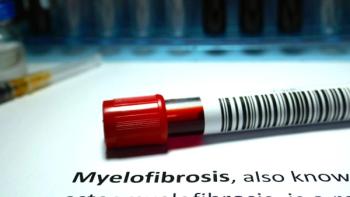
Myeloma Treatment Standards Continue to Evolve
Alfred L. Garfall lends insight as to what is new for myeloma treatment.
Alfred L. Garfall, M.D.
As more long-term data continue to come out, it is apparent that the treatment landscape for multiple myeloma is continually shifting. Researchers are still finding the best roles for stem cell transplant, immunomodulatory agents and maintenance therapy and the imminent introduction of chimeric antigen receptor (CAR)-modified T-cell therapies, says Alfred L. Garfall, M.D., MS.
The immunomodulatory agent Revlimid (lenalidomide) is a key component of triplet therapy, when used in combination with Velcade (bortezomib) or Kyprolis (Kyprolis) and dexamethasone. Findings from the SWOG-S0777 study showed a 29 percent reduction in the risk of death with Revlimid, Velcade and dexamethasone versus Revlimid and dexamethasone alone.
Even with these novel regimens, there still remains a role for autologous stem cell transplant (ASCT), Garfall noted, especially when used with maintenance therapy. In findings from a meta-analysis, maintenance Revlimid following ASCT reduced the risk of death by 25 percent compared with placebo or observation with.
“This response is [present] despite the slight increased risk of second primary malignancies with use of Revlimid in the maintenance setting,” said Garfall, assistant professor of medicine at the Hospital of the University of Pennsylvania.
In an interview with CURE, Garfall, discussed the treatment and management of patients with multiple myeloma, with a focus on maintenance therapy, CAR T-cell therapy and the role of transplant. He also highlighted the importance of aggressive therapy for patients with renal insufficiency.
Can you provide an overview of your presentation at the 2017 OncLive State of the Science Summit on Hematologic Malignancies?
I focused on data that have come out over the last few years for managing first-line therapy for multiple myeloma that we believe is best. The first systemic therapy that patients receive are consolidation strategies, stem cell transplants and maintenance therapies to attempt to maintain a response.
There have been several new regimens that have been developed over the last decade incorporating agents such as Revlimid, Velcade and Kyprolis that have shown potent initial responses. In the last couple of years, we started to get some of the long-term data from the studies. We are comparing them to one another to understand whether the initial response rates translate into long-term survival benefits compared with standard regimens.
We focused on the SWOG-S0777 study that compared Revlimid, Velcade and dexamethasone to Revlimid and dexamethasone. This study is comparing a three-drug therapy to a two-drug therapy. Not only was there a slightly higher response rate with the three-drug therapy, but there was a significant improvement in overall survival (OS), as well. With those results, this treatment is moving forward to being our standard approach for early diagnosed multiple myeloma, as opposed to the previous approach which was to start with two-drug regimens and then move on to three-drug regimens in patients with aggressive disease who were not responding.
There are data that have come out recently that continue to support the role of high-dose ASCT in the first-line therapy for multiple myeloma showing that, even with modern therapy, there continues to be a PFS and OS benefit associated with this approach.
This treatment is followed by low-dose Revlimid maintenance therapy.
With these novel options, what role will transplant have in the future of this landscape?
In the last year, the meta-analyses of long-term follow-up within three large clinical trials compared maintenance therapy with placebo or no maintenance therapy showing that there is an OS benefit to maintenance Revlimid.There will still be a role for transplant. If transplant was one out of 100 therapies that we have for this disease, it would be easy to set it aside. However, as it is only one of 12 or so therapies, it will continue to play a role despite the inconvenience and adverse events. For the short-term, most patients do get through it with proper supportive care and recovery.
Until we discover a similar R-CHOP therapy for myeloma, where we find just the right combination of novel medications that can potentially cure some patients, there will be a role for transplant because it is an active therapy. As long as patients are still relapsing, we should be trying to give them every active therapy, in some form, over the course of their disease until that supply of new therapies becomes so plentiful that transplant is just one of many alternatives.
[We will need to determine the optimal] the timing of transplant and whether it should be done in first-line therapy. We are already receiving some good data on this question from these 20 ongoing studies in Europe and the United States comparing transplant upfront with transplant deferred. It increases our confidence of deferral when a patient progresses, since we can get them back into a response with transplant in the second-line therapy. When we only had a few agents available, it was harder to envision.
What are your thoughts on CAR T-cell therapy as an option for patients with multiple myeloma?
Most of us are quite confident that a patient who forgoes transplant and progresses after first-line therapy can get back into a response with one of the many salvage therapies and receive a transplant later in the disease course. The long-term data from the IFM/DFCI 2009 study, which is investigating the OS of upfront transplant to deferred transplant, will give us some answers to those questions.There is a possibility that it could be an option. In myeloma, it is still very early days. We are talking about very small studies that have less than 50 patients each with the technologies that have been tested and allow new phase I studies to continue to open. We are still defining the safety profile and duration of response of CAR T cells in myeloma in whom they work best.
What are the other important things to know regarding changes to the myeloma paradigm?
By looking at the details of the patients who respond best, we could predict which other studies would see better responses and go from there. It is possible that, for patients with high-risk multiple myeloma, their initial response rates are similar to standard-risk patients. However, the duration is very short compared with standard-risk patients. I could imagine a good argument for bearing the risk of CAR T-cell therapy in the early line of therapy for high-risk patients.There are some retrospective data suggesting that patients with renal-insufficient multiple myeloma still benefit from aggressive therapy, such as high-dose stem cell transplantation. Renal insufficiency is very common in myeloma and we should view that as a medical emergency when a patient presents with it. They should start on therapy very quickly with hopes of salvaging renal function while we still try to give those patients aggressive therapy.
Aggressive therapy leads to better outcomes in patients with normal renal function. Aggressive therapy, such as high-dose ASCT, is safe and effective for patients with renal insufficiency. Many of those patients who enter that therapy on dialysis can come off of dialysis after transplant.
Patients with renal insufficiency should be referred for transplant evaluations at transplant centers. Following a patient’s initial diagnosis is an area where aggressive therapy makes sense. Perhaps specialty centers can help in guiding the initial management of patients who present with poor renal insufficiency.





